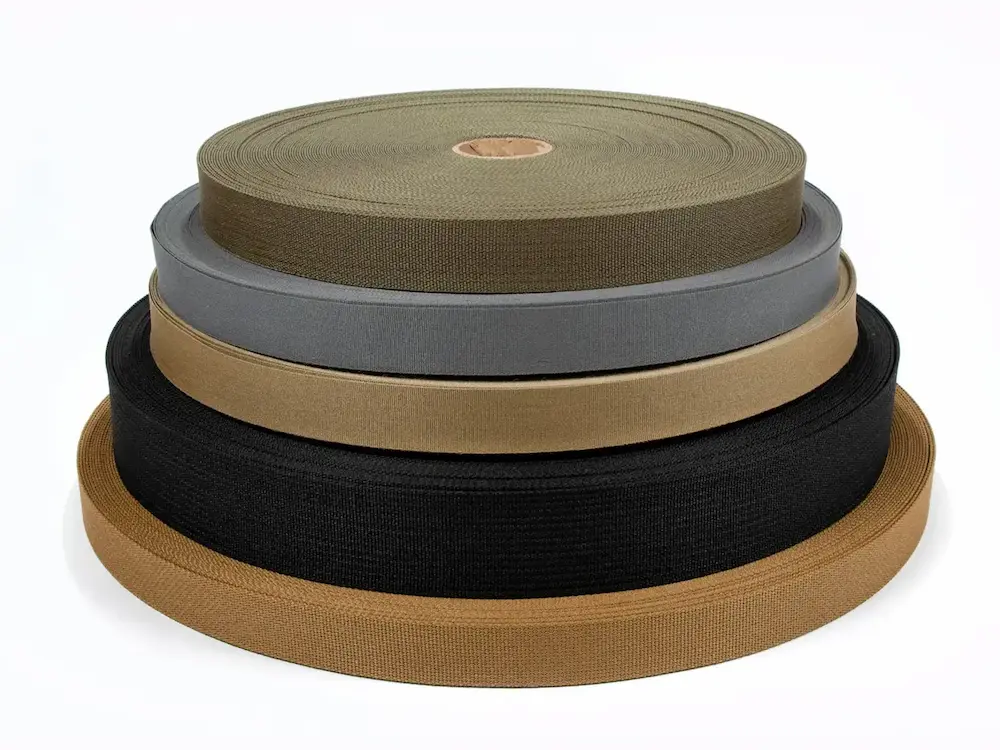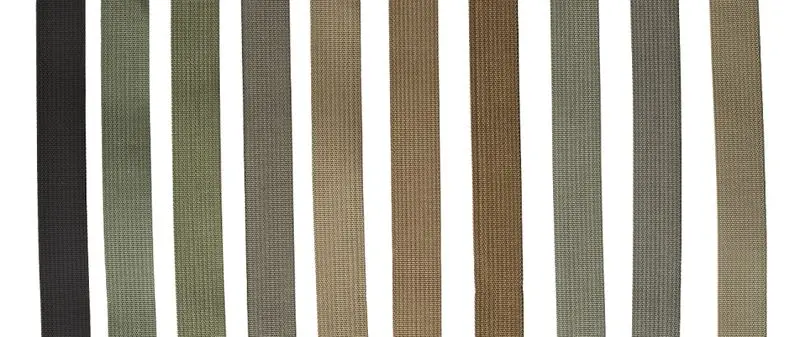...At the core of this equipment lies a critical component: mil-spec webbing. This isn't your average strap. As a dedicated manufacturer, we engineer these high-performance materials to meet stringent U.S. Department of Defense standards...
This article delves into the specifics of several key military webbing standards, including the workhorses MIL-W-17337F and MIL-W-4088K, along with the lighter-duty MIL-PRF-5038J. Understanding these specifications is crucial for any brand designing tactical gear, load-bearing equipment, or life-saving devices.
What Makes Webbing "Mil-Spec"?
"Mil-spec" is short for Military Specification, a document that defines the technical requirements for a product procured by the military. This means the webbing must be manufactured and tested to guarantee a specific level of quality and performance. These standards dictate everything from the raw materials used (most commonly high-tenacity Nylon webbing), weave construction, and tensile strength to colorfastness and resistance to abrasion.
For products sold to the U.S. Department of Defense, an additional requirement known as the Berry Amendment often applies. This mandates that all components, including the yarn used for webbing, must be 100% sourced and produced in the United States, ensuring a secure domestic supply chain for critical materials.
Quick Comparison of Key Mil-Spec Standards
| Specification | Common Name | Key Characteristic | Primary Application |
|---|---|---|---|
| MIL-W-17337F | Tactical Webbing / MOLLE Webbing | High strength, thin, flexible, abrasion-resistant | MOLLE/PALS systems, rifle slings, general gear |
| MIL-W-4088K | Parachute Webbing / Heavy-Duty Webbing | Extremely high tensile strength | Parachute harnesses, cargo restraints, safety lines |
| MIL-PRF-5038J | Binding Tape / Reinforcement Tape | Thin, lightweight, pliable | Binding fabric edges, seam reinforcement |
The Workhorse: MIL-W-17337F
When you think of tactical webbing, you're likely picturing something that meets or is inspired by the MIL-W-17337F standard. This is one of the most versatile and widely used specifications for military equipment due to its excellent balance of properties. [9]
- Material and Construction: This standard specifies a tight, flat weave that is highly resistant to abrasion. [9] It can be produced from high-tenacity Nylon 6 or Nylon 6,6 yarn on both traditional shuttle looms and modern shuttleless looms. [1] The specification divides the webbing into classes: Class 1 is for life-saving equipment, while the more common Class 2 is designated for general load-carrying equipment. [1]
- Key Characteristics: It's known for providing high strength in a relatively thin and flexible profile, making it easy to handle and sew. [9] For example, a typical 1-inch wide MIL-W-17337 webbing has a minimum breaking strength of 1200 pounds. [8] It also offers excellent resistance to UV rays, mildew, and various chemicals, ensuring durability in harsh field conditions. [9]
- Common Applications: Its primary use is in load-bearing equipment. It is the standard for PALS (Pouch Attachment Ladder System) webbing on MOLLE (Modular Lightweight Load-carrying Equipment) vests and backpacks. You'll also find it in rifle slings, tactical rigger belts, camera straps, and heavy-duty outdoor gear. [8, 9]
The Heavy Lifter: MIL-W-4088K
For applications where exceptional strength is the top priority, MIL-W-4088K is the go-to standard. This military webbing is renowned for its incredibly high tensile strength and durability.
- Key Characteristics: MIL-W-4088K is a heavy-duty nylon webbing known for its robust and tight construction, which provides excellent resistance to wear and tear. Despite its strength, it remains flexible enough for various applications.
- Common Applications: Originally developed for parachute harnesses, its use has expanded significantly. It is now critical in aerospace safety equipment, cargo restraints, industrial safety harnesses, and rescue gear where failure could be catastrophic.
- Performance: This webbing is engineered to withstand extreme stress and harsh environmental conditions, including exposure to moisture and heat.
The Reinforcer: MIL-PRF-5038J
Not all webbing needs to be a heavyweight champion. MIL-PRF-5038J (now superseded by MIL-DTL-5038K) covers a range of lighter-weight nylon tapes often used for binding and reinforcement. [10, 19]
- Material and Construction: This webbing, often called "binding tape," can feature various weaves, such as a plain weave or a distinctive herringbone twill, depending on the type specified. [12] Like other mil-specs, it uses durable Nylon 6 or 6,6 yarn. [12]
- Key Characteristics: This tape is thinner, lighter, and more pliable than its load-bearing counterparts. [5, 10] Its purpose isn't to carry the main load but to add strength and durability to the finished product by protecting fabric edges.
- Common Applications: Its primary role is reinforcing the edges of fabrics and binding seams on military equipage like MOLLE pouches and parachute packs. [12] You'll find it used for finishing the openings of pockets, creating small loops for routing cables, or in any application where preventing fraying is needed without adding significant bulk.

Choosing the Right Standard for Your Product
The selection of mil-spec webbing goes beyond just picking the strongest option. It involves a careful analysis of the product's intended use.
- For MOLLE systems and general tactical gear, the balanced performance of MIL-W-17337F makes it the industry standard.
- For life-saving equipment like parachutes and safety harnesses, the superior strength of MIL-W-4088K is non-negotiable.
- For finishing and reinforcement, the lightweight and flexible nature of MIL-PRF-5038J is the ideal choice.
Frequently Asked Questions about Mil-Spec Webbing
What is the Berry Amendment and does it apply to webbing?
The Berry Amendment is a U.S. law requiring the Department of Defense (DoD) to use funds on food, clothing, and textiles (including webbing) that are 100% grown, sourced, and produced in the United States. If you are manufacturing goods for a DoD contract, you must use Berry Compliant webbing.
Is 'mil-style' webbing the same as 'mil-spec' webbing?
Absolutely not. 'Mil-style' or 'commercial-spec' webbing is designed to look like mil-spec webbing but is not manufactured or tested to the same stringent standards. It often uses lower-grade materials and may not meet the required break strengths. For any critical application, always insist on certified 'mil-spec' webbing.
What is IRR (Infrared Reflective) webbing?
IRR webbing is treated to have low reflectance to infrared light, making it less visible to night vision devices. This is a critical feature for military gear used in modern tactical environments. You can learn more in our guide to Military & IRR Webbing.
As a manufacturer specializing in military specification webbing solutions, we understand the critical differences between these standards. The integrity of your product depends on it.
Need Berry Compliant samples? Contact TMG Webbing today for a quote on 17337F, 4088K, or custom tactical straps.

